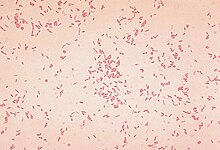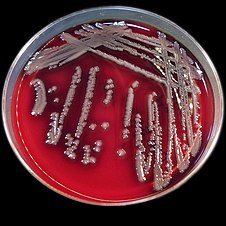| Aeromonas hydrophila | |
|---|---|

| |
| Scientific classification | |
| Domain: | Bacteria |
| Phylum: | Pseudomonadota |
| Class: | Gammaproteobacteria |
| Order: | Aeromonadales |
| Family: | Aeromonadaceae |
| Genus: | Aeromonas |
| Species: | A. hydrophila
|
| Binomial name | |
| Aeromonas hydrophila (Chester, 1901)
Stanier, 1943 | |
| Synonyms | |
|
Bacillus hydrophilus fuscus Sanarelli 1871 | |

Aeromonas hydrophila is a heterotrophic, Gram-negative, rod-shaped bacterium mainly found in areas with a warm climate. This bacterium can be found in fresh or brackish water. It can survive in aerobic and anaerobic environments, and can digest materials such as gelatin and hemoglobin. A. hydrophila was isolated from humans and animals in the 1950s. It is the best known of the species of Aeromonas. It is resistant to most common antibiotics and cold temperatures and is oxidase- and indole-positive. Aeromonas hydrophila also has a symbiotic relationship as gut flora inside of certain leeches, such as Hirudo medicinalis.[1]
- ^ Sawyer RT (1986). "Leech Biology and Behaviour". Feeding, Biology. Ecology and Systematic (PDF). Vol. II. Oxford: Clarendon Press. Retrieved 18 August 2020 – via Biopharm Leeches.